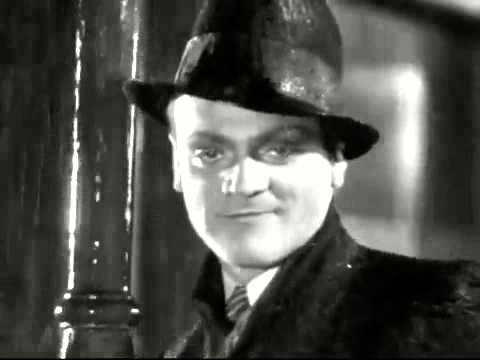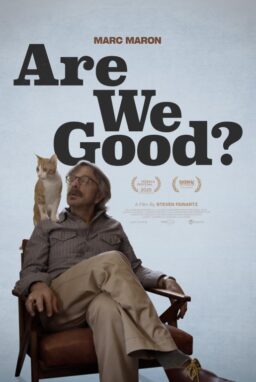Mention “The Public Enemy” today, and you might trigger memories of one or two key images: James Cagney as volatile gangster Tom Powers shoving a grapefruit in the face of his girlfriend Kitty (Mae Clarke), or falling down in pouring rain after getting shot (Cagney suffered more spectacularly onscreen than just about anyone). But they’ll probably be divorced from the context of the story, like gifs in somebody’s Twitter feed. Much of the rest of William Wellman’s thriller has tumbled into the cultural memory hole, unfortunately—the proliferation of media and the devaluing of older cinema being what they are. Eighteen years ago, David Chase’s HBO series “The Sopranos” briefly gave the movie a second life in an episode where gangster Tony Soprano grieves for his own mother, a master manipulator incapable of returning her son’s love, by obsessively watching “The Public Enemy,” whose hero’s love for his own mother (Beryl Mercer) is fully reciprocated. That was the closest “The Public Enemy” got to a cultural renaissance, which seems odd considering it’s the wellspring of a still-durable genre, and a fine example of a hit fueled mainly by the charisma of its star.
Which isn’t to say that Wellman’s movie doesn’t mesmerize at times. Like a lot of films shot between the end of the silent era and the early years of sound, this one uses music and audio effects sparingly and with imagination, never overloading the audience (or the 1931 theater’s monaural speakers) with excessive and unnecessary detail. You hear and see what you need to hear and see, and the experience of watching and listening to “The Public Enemy” has a meditative effect, driving home what visual and aural soup contemporary films have become. The traffic noises, the gunshots, the sounds of running feet and pouring rain and police whistles and sirens, and the occasional long silences, are all of a piece with the sinuous tracking shots that follow young Tom and his best pal Matt Doyle (Edward Woods) as they scamper around town trying to get in good with local gang boss “Putty Nose” (Murray Kinnell), as well as the scenes following a slightly older Tom, who lets hubris get the better of him as he accumulates power and a body count and clashes with his brother Mike (Donald Cook), a World War I veteran and straitlaced citizen.
Unfortunately, “The Public Enemy” isn’t as tightly scripted a movie as some other Cagney gangster pictures. Even at 81 minutes, it meanders a bit, and one setpiece doesn’t often seem to follow another, logically or psychologically. This is partly because the story is rather thin and the emphases seem off at times. The long opening section, for instance, is filled with remarkable bits of filmmaking and acting, but doesn’t really set up the rest of the movie as it ought to.
The unrelenting intensity of Cagney’s tough-guy performance poses a different set of problems, though admittedly they’re the kind that any commercial movie wants to have. Cagney starts at 7 or 8 on the Badass-O-Meter and rises from there. You never doubt Tom is going to climb to somewhere near the top of the underworld heap and flame out, because that’s what happens in pictures like this; but his dark charisma so decisively overwhelms every other character—even his brother, who’s a classic 1930s-issue wet blanket, and Putty Nose, who seems a bit too amiable and reasonable to be a feared local crime boss—that after a while it feels as if there really are no other characters, except maybe Tom’s mother, who loves both of her sons unconditionally, as mothers are supposed to do. Even when Cagney is listening to other characters, he’s so much more alive than anyone he shares the screen with that it’s impossible to take his adversaries as credible threats. They’re paper tigers, and he’s the kind with claws and teeth.
Is Cagney wearing eyeliner, or is his Rasputin stare so challenging that it’s burning holes in the screen? You get why audiences went mad for Cagney as Tom: he doesn’t seem to be pretending to be dangerous, but to actually be dangerous, like an ex-convict who got out of the joint, took a couple of acting lessons, and became a movie star because he wasn’t faking anything. But he was. Cagney grew up a poor Irish kid on New York’s Lower East Side, the second of seven children, two of whom died in infancy. He had a talent for street fighting and often defended his older brother Harry, a medical student. But he wasn’t a criminal and certainly never killed anybody. Before he became a movie actor, he was a tap dancer. So this was acting, pure and simple: a performer finding a core of rage and need, and projecting it outward.
Those qualities still come through so powerfully that they overwhelm the film’s creakier aspects. The latter include a certain boringness in any scene not focused on Tom, and a predictable (for that era) have-your-cake-and-eat-it attitude towards criminality, exemplified by the opening title card, which makes “The Public Enemy” sound like a moralistic examination of a regrettable social problem rather than the exciting story of an ambitious but limited hoodlum who did well for himself until his luck ran out. The film has maintained a tentative foothold in the American imagination thanks to Cagney’s insinuating smirk and king cobra eyes. He was a killer talent.












